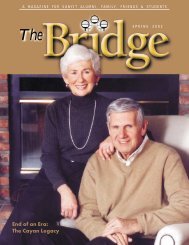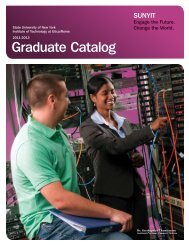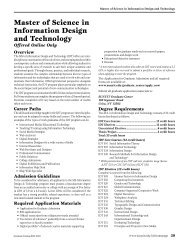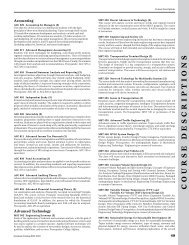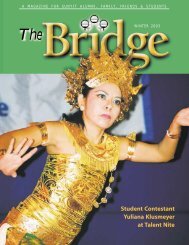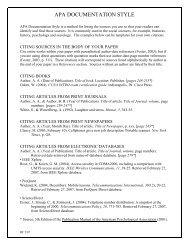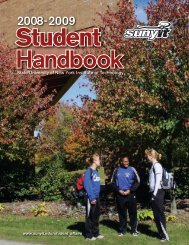Expanding the Public Sphere through Computer ... - ResearchGate
Expanding the Public Sphere through Computer ... - ResearchGate
Expanding the Public Sphere through Computer ... - ResearchGate
You also want an ePaper? Increase the reach of your titles
YUMPU automatically turns print PDFs into web optimized ePapers that Google loves.
CHAPTER 3. TECHNOLOGY & THE PUBLIC SPHERE 45<br />
mass media (see Ganley (1992), Neuman (1991), Rice (1984) and Abramson,<br />
Arterton & Orren (1988)), and implies that <strong>the</strong> structural characteristics of media<br />
are related to <strong>the</strong> democratic character of communication within <strong>the</strong>m. Abramson,<br />
Arterton & Orren (1988) list six properties in <strong>the</strong>ir chapter, “What’s New About<br />
<strong>the</strong> New Media?” while Neuman (1991) identifies nine “Generic Properties of <strong>the</strong><br />
New Media.”<br />
Some of <strong>the</strong> characteristics suggest a maintenance of <strong>the</strong> existing structure of relationships<br />
among participants in communicative exchanges, albeit at a decreasing<br />
cost, increasing volume, increasing content diversity and increasing speed. Vast<br />
shifts in <strong>the</strong> volume of information, <strong>the</strong> rapidity with which it moves, or <strong>the</strong> financial<br />
resources which it requires are not <strong>the</strong> engine of change driving <strong>the</strong> most<br />
significant new uses of media technology. If <strong>the</strong> revolution in media use was to be<br />
described with one word, that word would have to be “control.” Beniger (1986)<br />
has it right when he locates <strong>the</strong> change mechanism during <strong>the</strong> past 150 years in <strong>the</strong><br />
“control revolution.” Without major shifts in control over media and information,<br />
all of <strong>the</strong> developments discussed above would have resulted in mere extensions<br />
of <strong>the</strong> old media.<br />
Neuman (1991) and Abramson, Arterton & Orren (1988) examine separately developments<br />
in “user” control and “producer” control. The most important development<br />
in <strong>the</strong> revolution of control in media is what Smith (1980, 21) has<br />
labeled as a shift in sovereignty: “In computer-controlled information systems <strong>the</strong><br />
sovereignty over <strong>the</strong> text moves from <strong>the</strong> supplier of information to <strong>the</strong> controller<br />
of <strong>the</strong> technology.” With this sovereignty comes unprecedented control over receiving,<br />
collecting, storing, formatting, processing and distributing information<br />
(Schneider 1990).<br />
It is in describing <strong>the</strong> use of media technology that <strong>the</strong> separate powers of consumer<br />
and producer control become obvious. When <strong>the</strong> technology being discussed<br />
is a distribution medium, <strong>the</strong> producer has access to vastly increased control<br />
mechanisms. The ability to target a specific audience is a form of producer<br />
control greatly expanded in <strong>the</strong> new media environment (Abramson, Arterton &<br />
Orren 1988, Neuman 1991). By transmitting a message to a preselected audience<br />
on <strong>the</strong> basis of facts or perceptions of specific individuals – in essence, creating<br />
an audience or a public for a specific message – <strong>the</strong> producer presumably<br />
is exercising a greater degree of control over <strong>the</strong> information than by transmitting<br />
<strong>the</strong> same message to an undifferentiated, heterogeneous mass audience. The<br />
audience begins to look less and less like <strong>the</strong> traditional audience for mass com-



